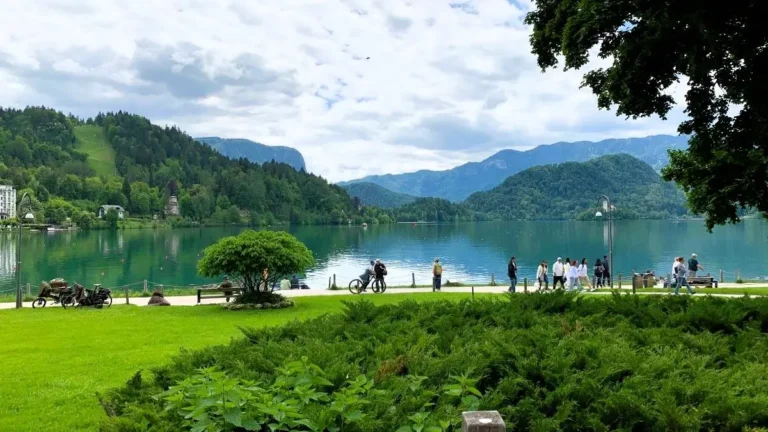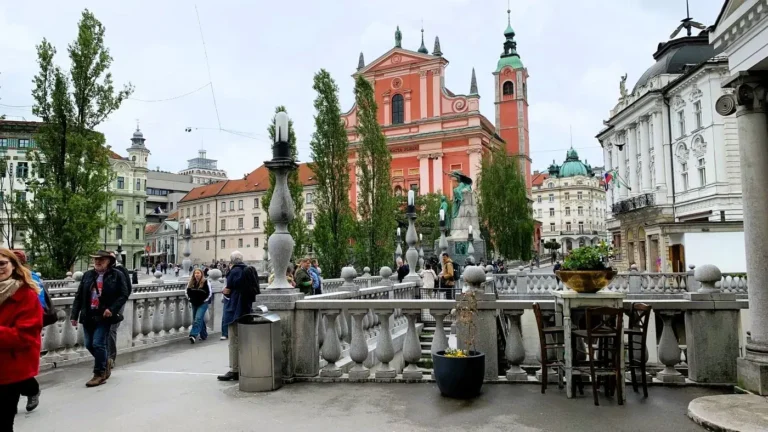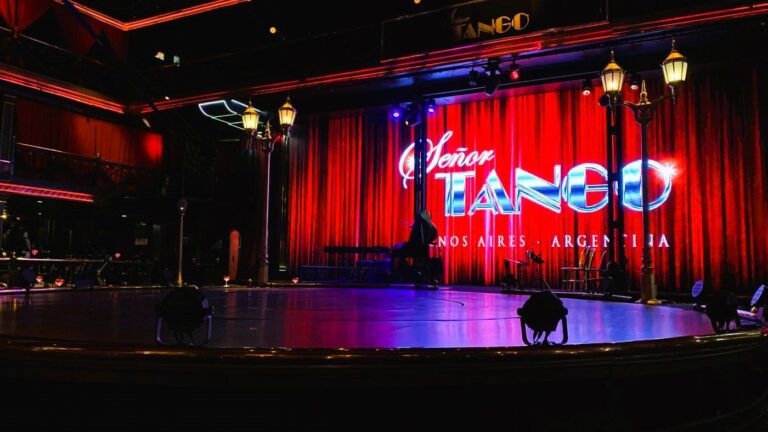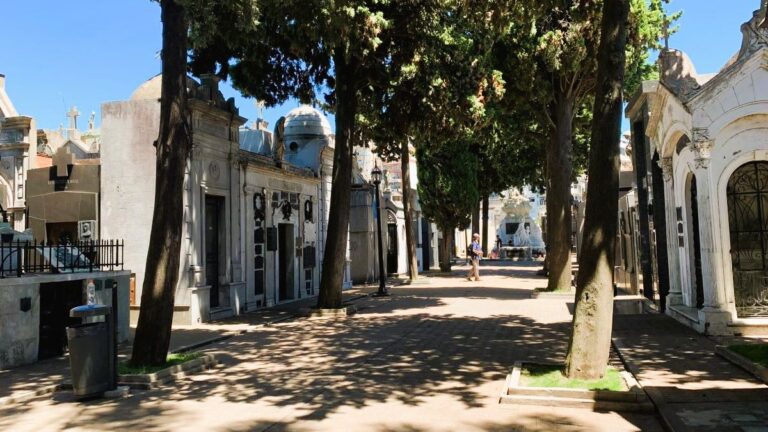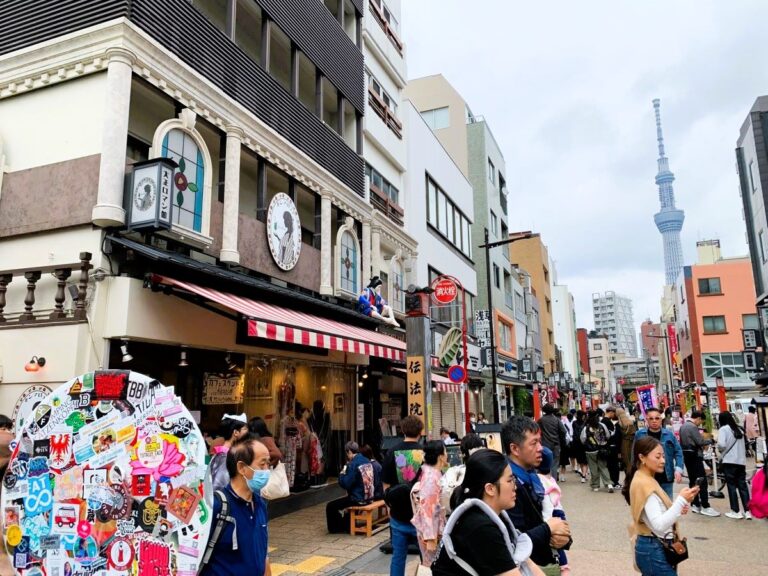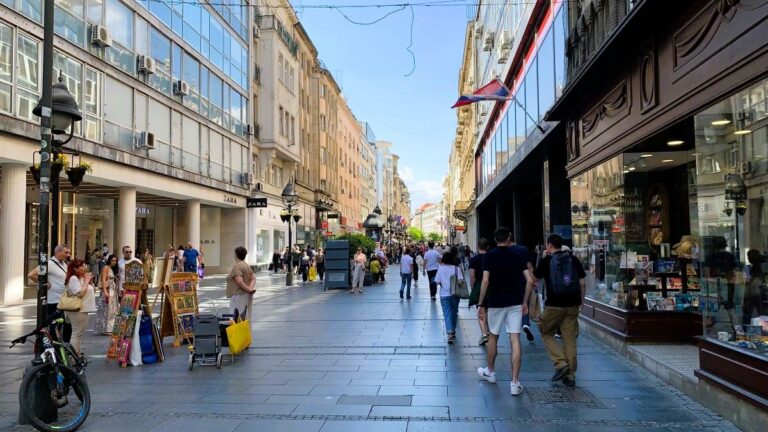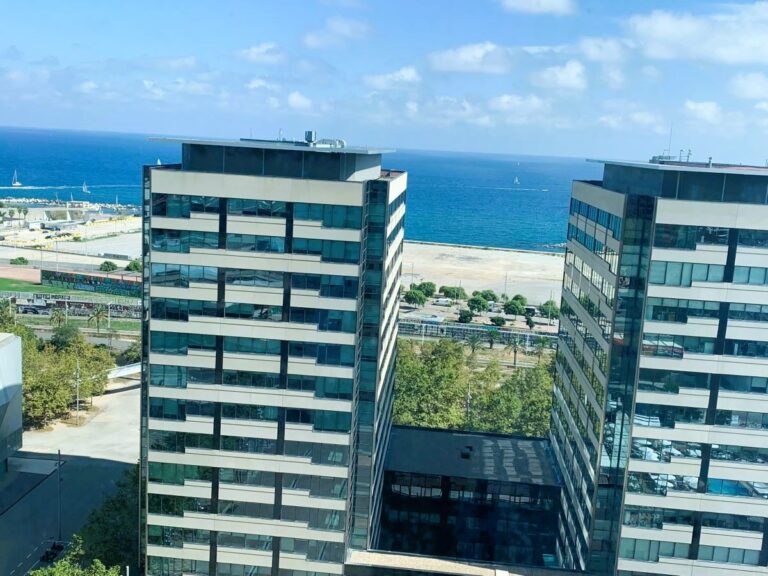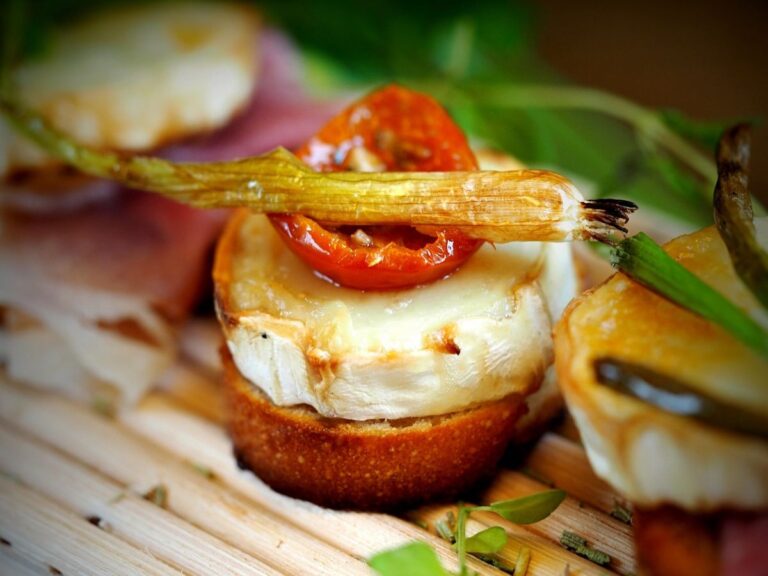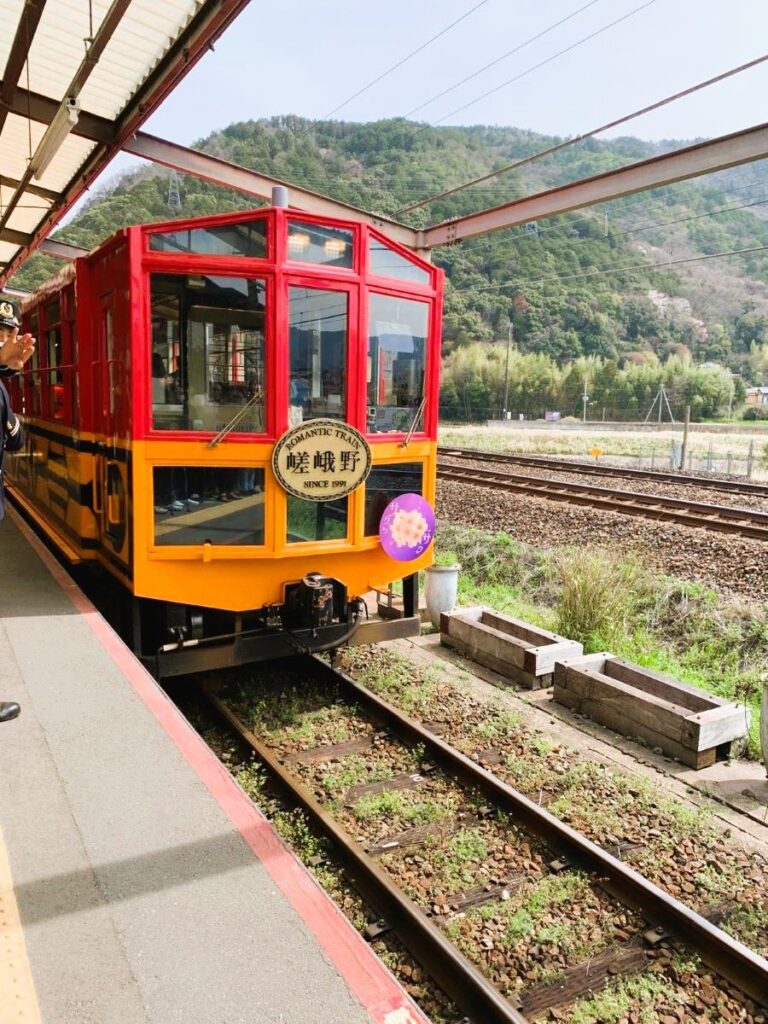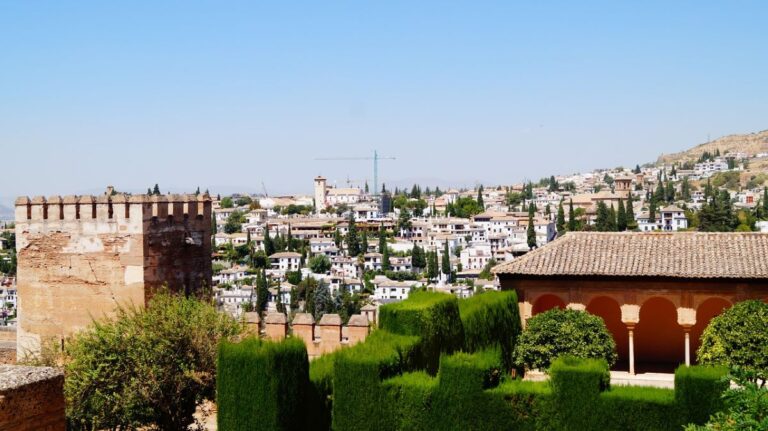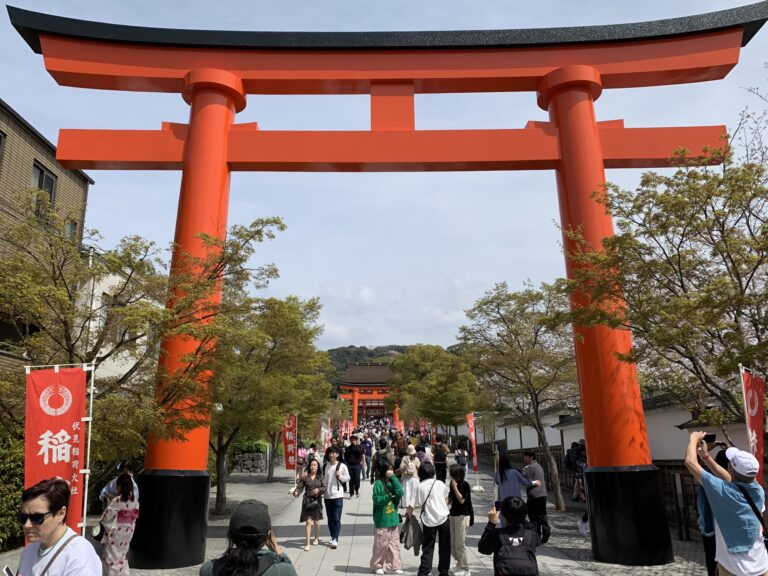The Ultimate 5-Day Itinerary in Tokyo: A Fun and Easy Guide for First-Time Visitors
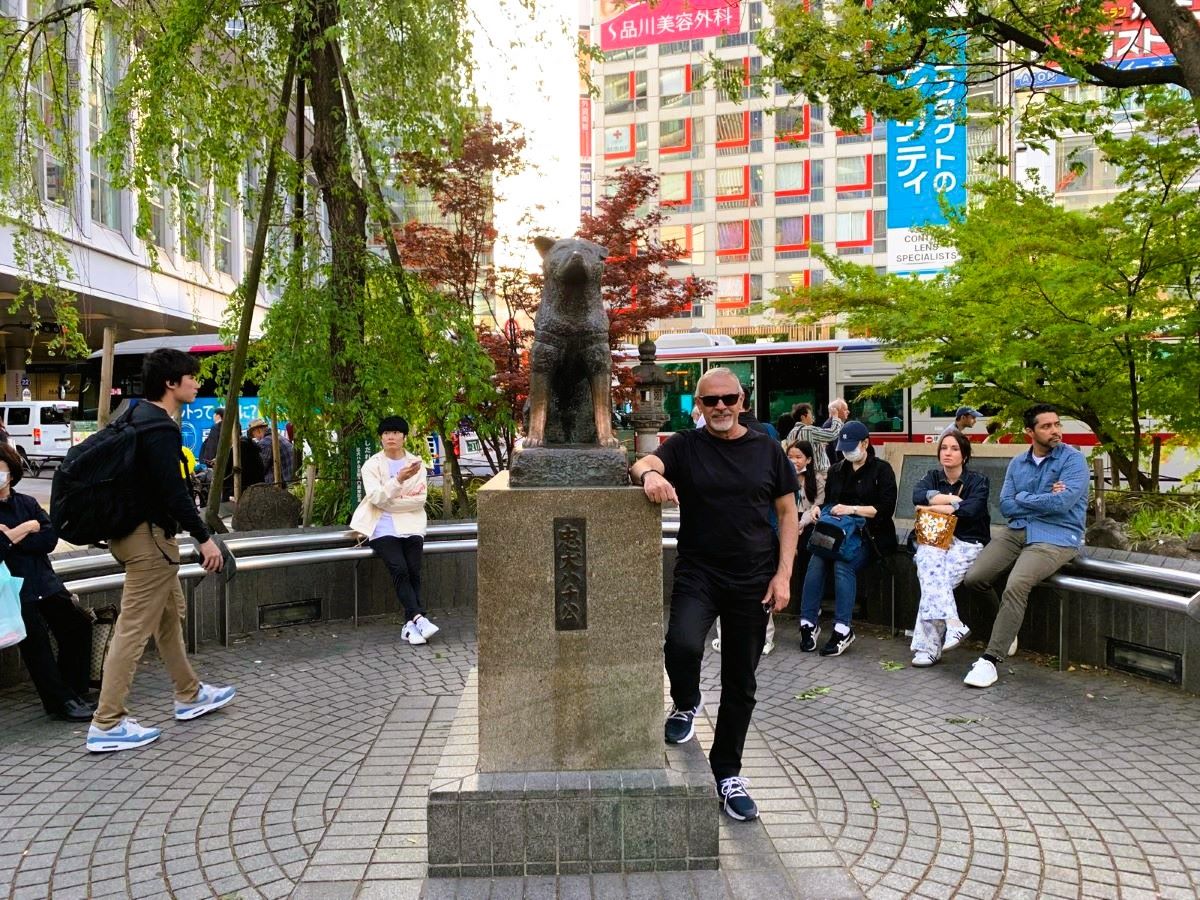
5 Day Itinerary in Tokyo – A City of Contrasts and Wonders
I’ve created this 5 day itinerary in Tokyo to help you get the most out of your time here. It’s based on my own experience in this incredible city.
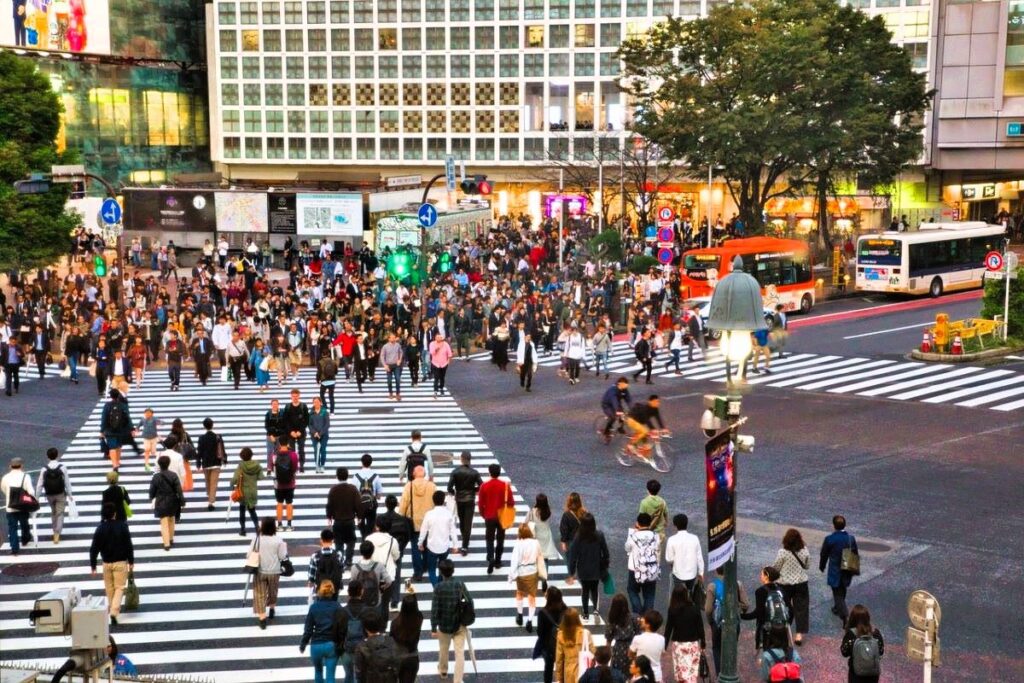
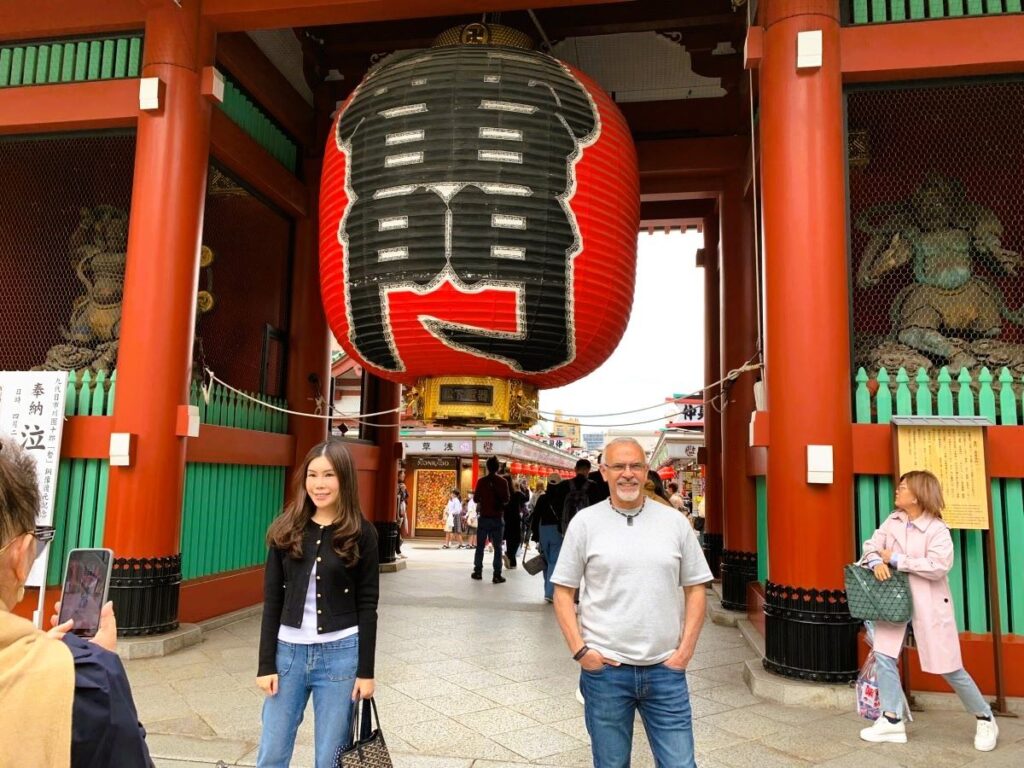

Tokyo is one of the most exciting cities in the world. It’s a place where ancient temples sit next to modern skyscrapers. You’ll find colorful streets, delicious food, serene gardens, and bustling shopping areas.
For first-time visitors, Tokyo can feel big and a bit overwhelming – but don’t worry! This 5 day itinerary will help you explore the city with ease.
After spending two weeks in Osaka, we took the bullet train to Tokyo to spend a week there. By the way, Osaka is another fantastic city that you should visit if possible. Visit my blog post on why it’s worth visiting Osaka.
Ready to see Tokyo in all its eclectic glory? Buckle up—your most unforgettable trip yet is about to begin.
Just walking around and exploring the city, and discovering the hidden gems on your own, is also great fun. I would also recommend walking tours.
To learn more about us click here.
If you’re wondering which is better, Tokyo or Osaka, check out my post: Tokyo vs Osaka.
Related Posts:
- Japan Travel Guide (2025): Discover The Magic of Japan
- Is Osaka Worth Visiting? 11 Unmissable Highlights for First-Time Visitors
- A Perfect Day in Nara Park Japan: Top Attractions, Feeding Deer, and Quick Tips
- 3 Days Kyoto Itinerary: The Perfect Guide for Exploring Kyoto’s Best Attractions
- Day Trip to Kyoto: Must-See Spots & Tips for 2025
- A Perfect Day Trip to Hiroshima from Osaka: Itinerary, Tips, and Historical Insights
How much can you see of Tokyo in 5 days? I believe 5 days should be the minimum if you want to explore and enjoy Tokyo. If you can spend a week that’s even better.
In five days, you can taste the best ramen, wander through ancient temples, and shop in trendy neighborhoods. This 5 day itinerary in Tokyo guides you through Tokyo’s highlights, day by day, helping you spend less time on trains and more time enjoying each area.
If you have less or more time, and would like to create a personalized Tokyo itinerary for a different length of time, you’ll love my FREE ITINERARY GENERATION TOOL below:
How to Get Around Tokyo: A Simple Guide to the Train System To Explore Tokyo in 5 days
Tokyo has one of the best public transportation systems in the world—and yes, it’s huge, but don’t worry! Once you understand the basics, it’s actually pretty easy to get around. The train and subway system is the fastest and most convenient way to explore the city, and you’ll be using it a lot during your 5-day adventure.
The Basics: Train vs. Subway
Tokyo’s train system includes JR (Japan Rail) lines, subway lines, and private railways. You’ll often use a mix of all three.
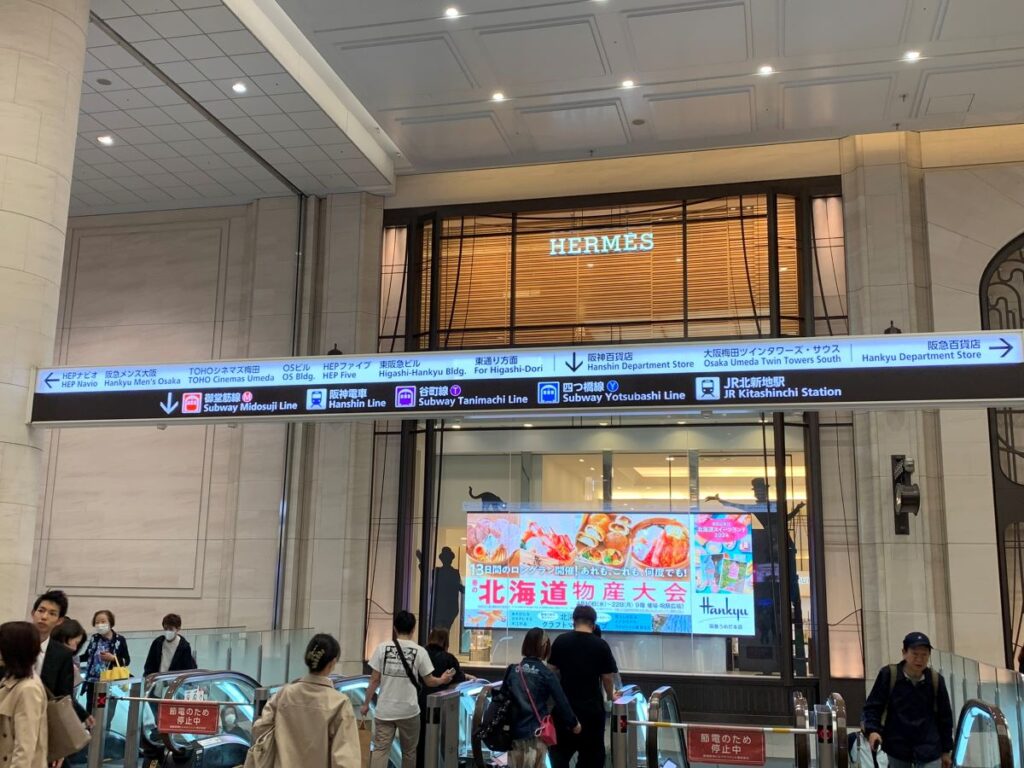
- JR Lines (Japan Rail): These are above-ground trains run by Japan Railways. The most useful one is the JR Yamanote Line—a loop line that connects major neighborhoods like Shinjuku, Shibuya, Tokyo Station, Ueno, and Harajuku.
- Tokyo Metro & Toei Subway: These are underground subway lines. Tokyo Metro runs most of the subway lines, and Toei operates a few others. Both are great for getting to places the JR lines don’t reach.
- Private Lines (like Keio, Tokyu, or Odakyu): These serve suburban areas but can also be handy for day trips and certain destinations.
Using an IC Card: Suica or Pasmo
Buy a Suica or Pasmo card when you arrive (they work the same way). These are prepaid cards you can tap to enter and exit any train or subway line—no need to buy individual tickets each time. You can get them from vending machines or ticket counters at most stations.
Tip: These cards also work on buses and even vending machines or convenience stores!
Finding Your Way
Use apps like:
- Google Maps – Yes, it works well in Tokyo! Just enter where you want to go, and it will show you which train lines to take, platforms, and even how much it costs.
- Navitime Japan Travel or Japan Transit Planner – Great for English-language train routes and real-time schedules.
Helpful Tips for First-Time Visitors
- Avoid rush hour (7:30–9:30 AM and 5:00–7:30 PM) – Trains can get very crowded.
- Platform signs are in English – Don’t stress! Station names, exits, and signs are all marked in English.
- Follow the color-coded lines – Each line has a name and a color (e.g., the Yamanote Line is green).
- Stations have exit numbers – If you’re meeting someone or trying to find a specific street, use the exit number (e.g., Shibuya Station, Hachiko Exit).
Most Useful Lines for Tourists
- JR Yamanote Line (Green): Loops through major city hubs like Shinjuku, Shibuya, Ueno, and Tokyo Station.
- Tokyo Metro Ginza Line (Orange): Great for reaching Asakusa, Ueno, and Shibuya.
- Toei Oedo Line (Magenta): Connects places like Roppongi, Shinjuku, and Tsukiji.
- Chuo Line (Orange): Fast access between Shinjuku and Tokyo Station—and also good for day trips to places like Mitaka (Ghibli Museum).
Getting around Tokyo might seem overwhelming at first, but after a few rides, you’ll feel like a local. The trains are clean, fast, safe, and almost always on time. Once you get the hang of it, getting from temple to sushi bar to neon-lit nightlife will be a breeze!
Without further ado let’s get started with the 5 day itinerary in Tokyo.
Day 1: Traditional Tokyo – Asakusa & Ueno
Senso-ji Temple
Start your 5 day itinerary in Tokyo in Asakusa, home to Tokyo’s oldest and most famous temple. Walk through the colorful Kaminarimon Gate, then stroll Nakamise-dori, a busy street lined with snack shops and souvenir stands. Senso-ji is beautiful in the morning before big crowds arrive.
For more on Sensoji Temple, click here.

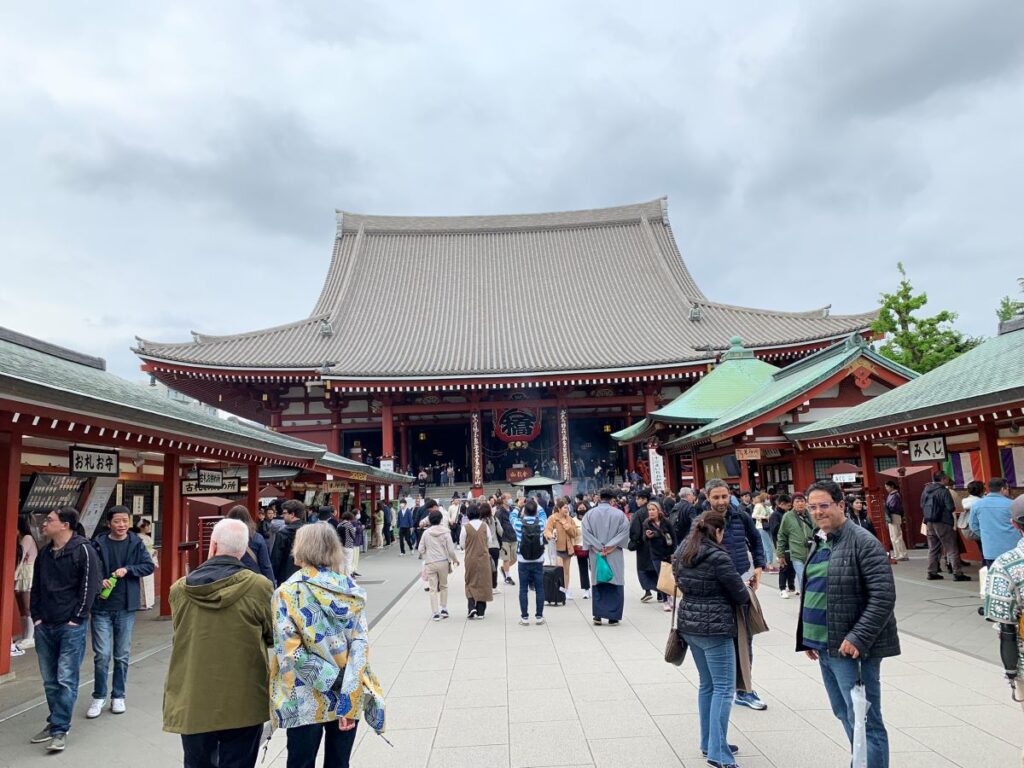
How to Get There:
Take the Tokyo Metro Ginza Line to Asakusa station.
Best Time to Visit:
Early morning or sunset for quieter temple grounds.
Sumida River
Just a short walk from Senso-ji, you’ll find the Sumida River. Relax by the river, take photos of Tokyo Skytree in the distance, or hop on a river cruise boat.
Ueno Park & Museums
Take a 10-minute train ride on the Ginza Line to Ueno. Ueno Park is loved for its museums, peaceful ponds, and cherry blossoms in spring. Visit the Tokyo National Museum for art and history, or the Ueno Zoo if you’re a fan of animals. The park is big, so wear comfy shoes.


Best Time to Visit:
Late morning through the afternoon.
Ameya-Yokocho Market
Stroll along this busy open-air market near Ueno Station. Find cheap snacks, fresh seafood, and street food, making it a great place for a lunch break.
Food Tips:
- Asakusa: Don’t skip the ningyo-yaki (small cakes filled with red bean), freshly made along Nakamise-dori.
- Try Asakusa Menchi for juicy ground meat cutlets—usually a short line.
- Ueno: Head to Innsyoutei in Ueno Park for traditional bento (lunch box) or check out the seafood bowls at Ameyoko Market.
- Some stalls are cash only, so keep coins handy.
- Street food lines move fast but be patient during lunch hour.
Day 2: Shibuya & Harajuku – Pop Culture Central

Shibuya Crossing
Day 2 of your 5 day itinerary in Tokyo can start at the world’s busiest intersection. Stand on any corner and watch the wave of people. Take a photo from the 2nd floor of Starbucks for a great view.
Hachiko Statue
See the famous statue of Hachiko, the loyal dog, just outside Shibuya Station. It’s a key meeting point and a quick photo spot.
Center Gai & Shopping
Wander Shibuya’s side streets for the latest fashion, arcades, and music shops. Visit Shibuya 109 for trendy clothes.
Takeshita Street (Harajuku)
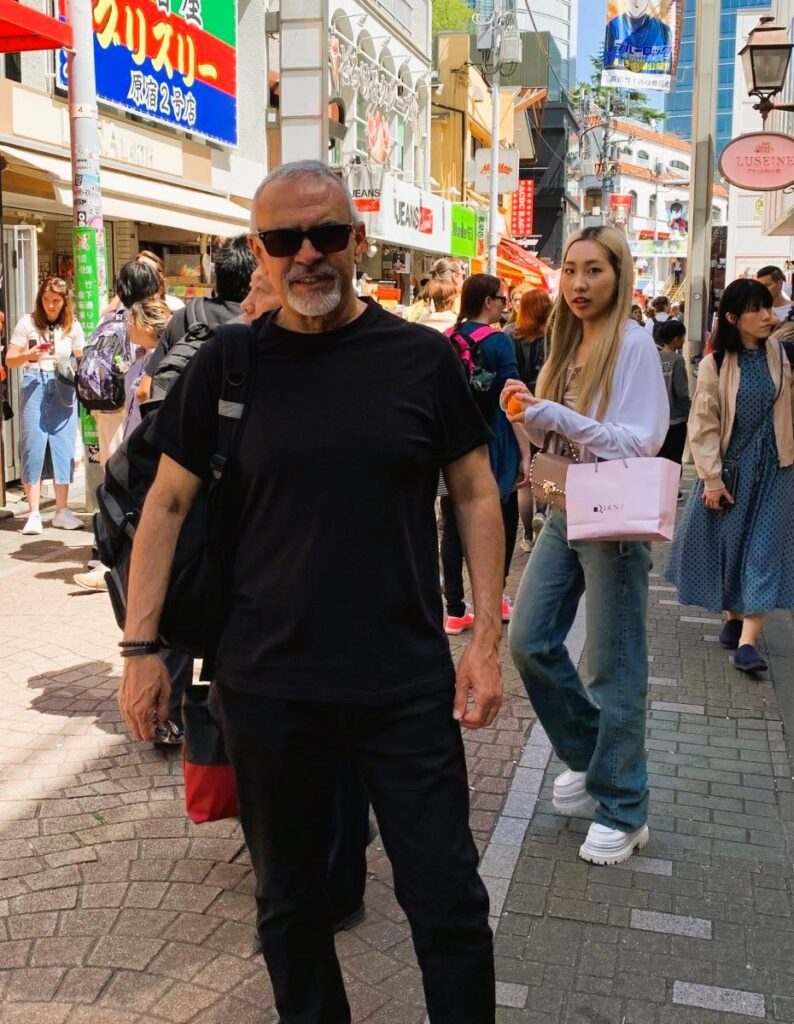
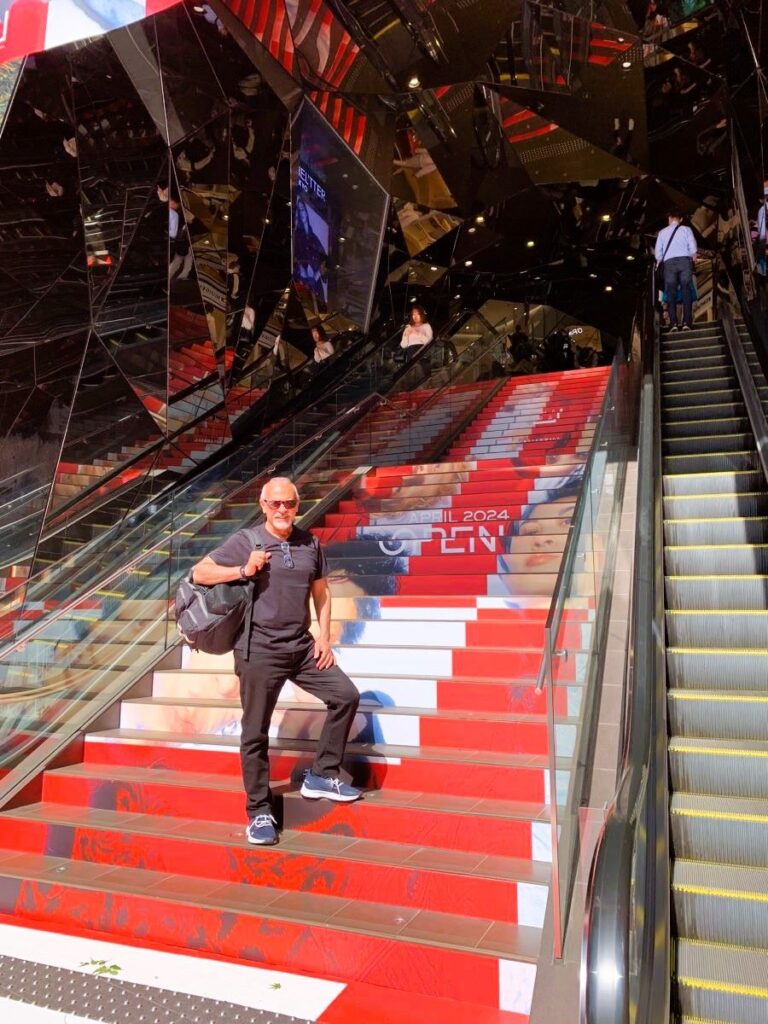
10 minutes away by train (JR Yamanote Line) is Harajuku, a teen fashion hot spot. Takeshita Street in Harajuku is one of Tokyo’s most colorful, youthful, and fun spots—perfect if you love quirky fashion, street food, and unique pop culture experiences.
Some fun things people like to do:
1. Shop for Cute & Trendy Fashion
- Explore independent boutiques, vintage shops, and J-fashion brands like WEGO, Bodyline, and 6%DOKIDOKI.
- Find everything from Lolita dresses to anime-themed accessories, colorful socks, and oversized kawaii sweaters.
2. Try Iconic Street Snacks
- Rainbow cotton candy at Totti Candy Factory
- Crepes stuffed with whipped cream, fruit, and cheesecake (try Marion Crêpes or Santa Monica Crepes)
- Tornado potatoes, Japanese fried chicken, and bubble tea
3. Visit a Purikura Photo Booth
- Take fun, decorated selfies with friends in purikura machines (photo booths with filters and stickers) at places like Purikura Land NOA.
4. Explore Quirky Shops
- Daiso 100 Yen Shop – budget-friendly Japanese goods and souvenirs.
- Cute character stores with items featuring Sanrio, Rilakkuma, and other anime favorites.
- Takeshita-dori thrift stores – great for finding unique secondhand fashion.
5. Animal Cafés
- Stop by a hedgehog café, owl café, or dog/cat café nearby for a super cute animal encounter.
6. Get a Kawaii Makeover
- Try colorful hair extensions, nail art, or Harajuku-style makeup at one of the local salons or pop-up beauty booths.
Pro Tip:
Weekends can get very crowded. If you want better photos and less foot traffic, go earlier in the day on a weekday!
Meiji Shrine
Walk off the street snacks with a stroll to nearby Meiji Shrine. Surrounded by forest, it feels calm and worlds away from the busy city.
Best Time to Visit:
Late morning or early afternoon for shopping; shrine visits are peaceful at any time.
Food Tips:
- Shibuya: Uobei Sushi offers conveyor-belt sushi that’s fast and wallet-friendly. Or grab a melon pan ice-cream sandwich from World’s Second Best Melon Pan Ice Cream.
- Harajuku: Try rainbow cotton candy, crepes, or Taiyaki (fish-shaped cake). Marion Crepes is an old favorite.
- Cafés fill up after noon, so arrive early or mid-afternoon for seats.
- Most chain eateries take cards; tiny street food stalls may accept cash only.
Day 3: Shinjuku – Neon Nights & City Views
Tokyo Metropolitan Government Building
Start your day by heading to the observation decks for a free view over Tokyo, all the way to Mt Fuji on clear days.
Shinjuku Gyoen National Garden
Even busy Shinjuku has a peaceful escape. Shinjuku Gyoen blends Japanese, French, and English gardens. Enjoy a picnic or rest under cherry trees in spring.
Omoide Yokocho (Memory Lane)
In the evening, head to the narrow alleys filled with smoky yakitori stands and tiny bars. It’s great for street photos and eating like a local.
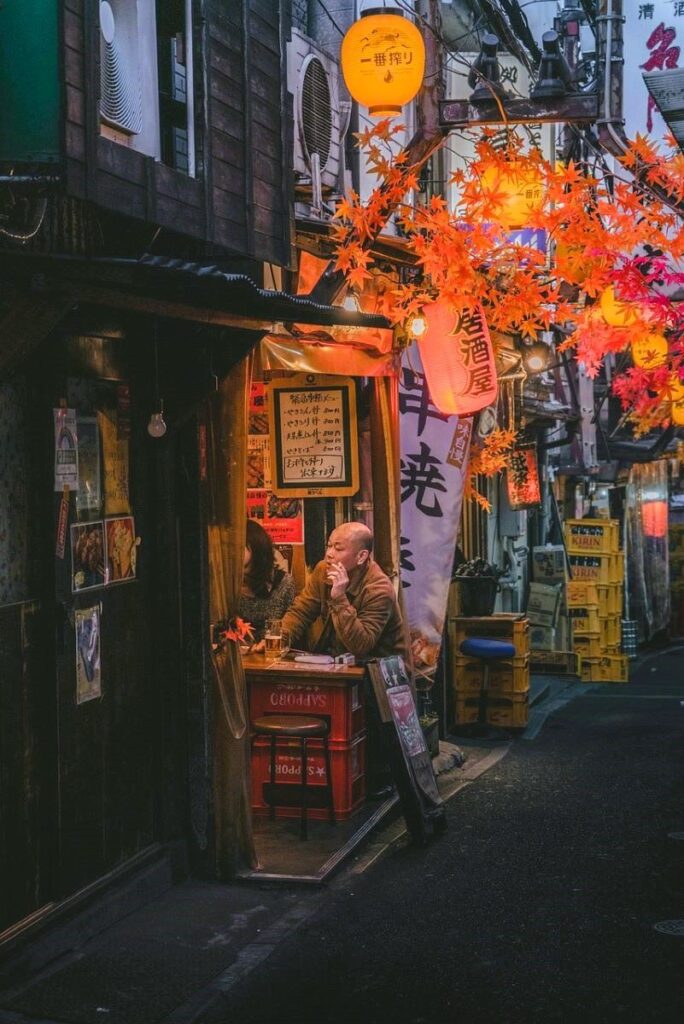
Kabukicho
Just a block away, Kabukicho is Shinjuku’s entertainment district, famous for neon lights, arcades, and karaoke. Go with friends for nighttime fun but stay on main streets if you’re new to Tokyo.
Best Time to Visit:
Start at the gardens in the morning. Save Omoide Yokocho and Kabukicho for after sunset.
Food Tips:
- Omoide Yokocho: Visit Torien for grilled chicken skewers. Many stalls have English menus; seats are limited so go early for dinner.
- Shinjuku: Afuri Ramen is famous for its yuzu-flavored broth—light and fresh. Expect evening lines but it’s worth it.
- Kabukicho has late-night ramen shops and izakayas, many open after midnight.
- Some bars and izakayas may require a small cover charge and cash for small orders.
Day 4: Modern Tokyo – Odaiba & Tokyo Bay
TeamLab Borderless or Planets
From Shinjuku or Shibuya, head to Odaiba by Yurikamome Line (a scenic, driverless train) for futuristic fun. TeamLab’s digital art museums are Instagram favorites, but require advance tickets.
Odaiba Seaside Park
Enjoy sea views, a sandy beach, and a replica Statue of Liberty. Walk along the water or rent a bike.
DiverCity Tokyo Plaza
Snap a photo with the life-sized Gundam robot. Inside, the mall has shops, a food court, and arcade games.
Palette Town & VenusFort
Explore these themed malls, especially on rainy days. Palette Town has more arcades and interactive fun, while VenusFort gives a taste of Tokyo shopping.
Best Time to Visit:
Start late morning for teamLab and spend the rest of the day in the area.
Food Tips:
- Odaiba malls have wide food courts with sushi, tempura, pancakes, takoyaki, and more.
- Try Gonpachi Odaiba for Japanese classics like tempura and udon.
- For sweet treats, pop into Godiva Café or get rainbow cotton candy.
- Malls accept cards but bring cash for vending machines and small snacks.
- Many restaurants in Odaiba take walk-ins, but teamLab museums need timed entry tickets.
Day 5: Tokyo’s East Side – Tsukiji, Ginza, and Akihabara
Tsukiji Outer Market
Last day of your 5 day itinerary in Tokyo: Start your day with a seafood breakfast at Tsukiji. While the famous fish auction is gone, the outdoor market is full of sushi stalls, grilled seafood, and Japanese omelets.
Ginza Shopping District
Walk or take the subway to Ginza, home to luxury shops and pretty window displays. Even window shopping here is fun. Try exploring side streets for cute cafés.
Akihabara Electric Town
End your trip in Akihabara, the center for video games, electronics, and anime culture. Visit maid cafés, check out retro game shops, or buy unique souvenirs.
Best Time to Visit:
Go to Tsukiji early for the freshest food, then explore Ginza mid-morning and Akihabara in the afternoon.
Food Tips:
- Tsukiji Market: Get sushi at Sushi Daiwa (worth the wait), Tamago (sweet omelet), or grilled scallops from street vendors. Try matcha ice cream too!
- Ginza: For a budget meal, try Ginza Kagari (famous for chicken ramen). Or, for coffee, Café de l’Ambre is a local favorite.
- Akihabara: Akiba Ichi is a good food court in UDX building, or check out local curry and ramen shops. Maid cafés are mostly cash only and may charge a table fee.
- Be prepared for lines during lunch. Popular sushi spots often require patience or an early start.
Tips for Getting Around Tokyo
- Subways & Trains:
- Buy a Suica or Pasmo IC card for easy tapping on trains and buses.
- Google Maps works well for route planning in Tokyo.
- Walking:
- Tokyo is safe and walkable. Many sites are close together in each neighborhood.
- Taxis:
- These are easy but more expensive. Use for late nights or if you’re tired.
- Language:
- Signs and announcements are often in English and Japanese.
- Cash vs. Card:
- Most big stores take cards, but some food stalls and small restaurants are cash only. Keep small bills and coins ready.
Where Can You Get The Best Ramen in Tokyo: 10 Top Budget-Friendly Options
1. Ichiran Ramen (一蘭) – Multiple Locations
- Type: Tonkotsu (pork bone)
- Why go: Famous for solo dining booths and customizable ramen. Rich, creamy broth and thin noodles.
- Budget: ¥1,000–¥1,300
- Tip: Open 24 hours at some locations (like Shibuya).
2. Afuri – Harajuku, Ebisu & more
- Type: Yuzu Shio Ramen (light chicken-based with citrus)
- Why go: Unique citrusy flavor, refreshing and lighter than tonkotsu.
- Budget: ¥1,000–¥1,200
- Tip: Great for people who prefer non-greasy ramen.
3. Mutekiya – Ikebukuro
- Type: Tonkotsu
- Why go: Famous for deep, rich broth and generous portions.
- Budget: ¥1,000–¥1,400
- Tip: Long lines during peak hours — go early or late!
4. Rokurinsha – Tokyo Station (Ramen Street)
- Type: Tsukemen (dipping noodles)
- Why go: Thick, chewy noodles dipped into intensely flavored broth.
- Budget: ¥1,100–¥1,300
- Tip: Located inside Tokyo Station’s “Ramen Street” underground area.
5. Ippudo – Multiple Locations
- Type: Tonkotsu
- Why go: Well-balanced flavor, not too salty or greasy. Consistent quality.
- Budget: ¥1,000–¥1,300
- Tip: Offers English menus and sometimes vegetarian options.
6. Nakiryu – Otsuka
- Type: Tantanmen (spicy sesame ramen)
- Why go: Michelin-starred ramen at reasonable prices.
- Budget: ¥1,200–¥1,500
- Tip: Expect a wait; try going on a weekday right at opening.
7. Menya Musashi – Shinjuku
- Type: Soy-based or miso ramen
- Why go: Bold flavors, thick noodles, and huge meat slices.
- Budget: ¥1,100–¥1,300
- Tip: Very filling — great value for hungry travelers.
8. Tatsunoya – Kichijoji
- Type: Tonkotsu
- Why go: Authentic Kyushu-style pork ramen in a cozy neighborhood setting.
- Budget: ¥900–¥1,200
- Tip: Kichijoji is a fun district to explore before or after.
9. Ramen Nagi – Golden Gai, Shinjuku
- Type: Ika Sumi (squid ink), spicy, and unique flavor combos
- Why go: Tiny ramen shop in a quirky bar alley, known for bold ramen styles.
- Budget: ¥1,000–¥1,200
- Tip: Try their “Original King” ramen first.
10. Tokyo Ramen Street – Inside Tokyo Station
- Why go: 8 top ramen shops in one place with various styles (shio, shoyu, miso, tonkotsu, tsukemen).
- Budget: ¥900–¥1,400 per bowl
- Tip: Ideal for ramen tasting — good for groups with different preferences.
💡 Budget Tips
- Lunch specials often include ramen + rice or gyoza sets for under ¥1,000.
- Ticket machines are common — insert money, pick your ramen, hand the ticket to staff.
- Tap water is always free.
- Many places don’t take cards, so carry cash.
Finding Hidden Gems
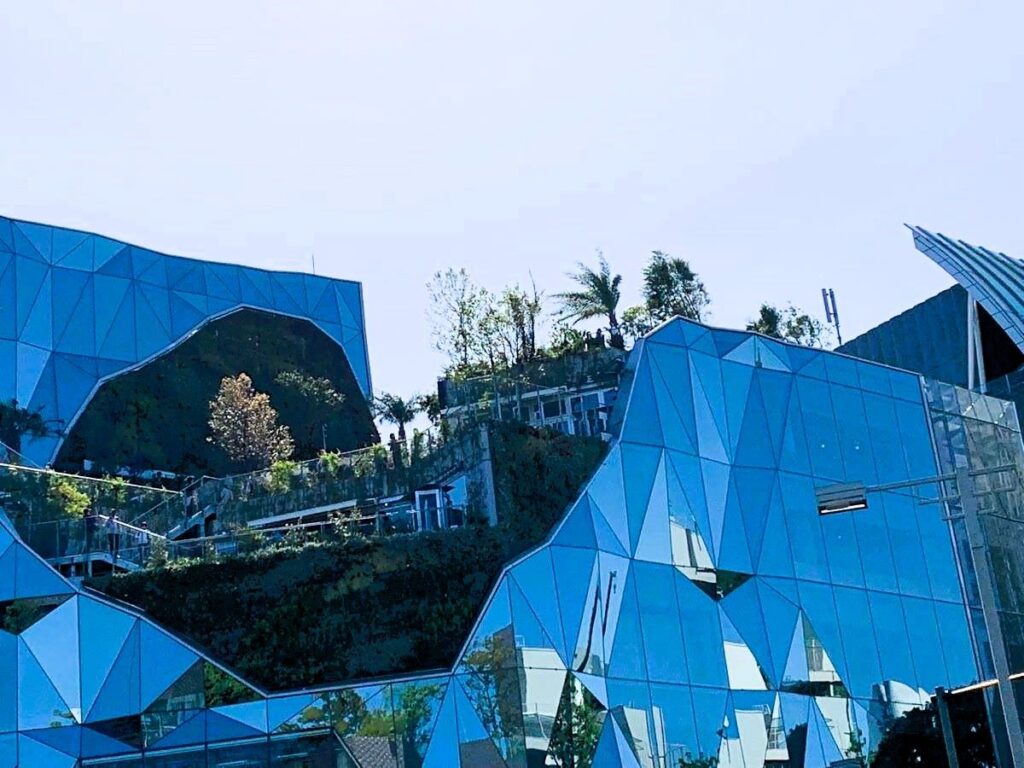
- Venture off main streets for small, family-run shops and cafés.
- Morning streets are quieter, while evenings come alive with bright lights and food aromas.
- Try department store basements (depachika) for snacks, sweets, and take-out meals.
Ready to Explore Tokyo?
Whether it’s your first trip or you visit often, Tokyo never gets old. This Tokyo 5 day itinerary helps you see the best, eat like a local, and make the most of your time in this exciting city. Enjoy every moment, every meal, and every new neighborhood—Tokyo is waiting for you!
Recent Posts:
-
Lake Bled Day Trip: The Perfect First-Time Adventure from Ljubljana
Welcome! If you’re spending time in Ljubljana and want to experience Slovenia’s most magical landscapes, a Lake Bled day trip from Ljubljana is an easy choice. With its glacial blue water, Lake Bled Island at its center, and Bled Castle perched high on the cliffs, this spot looks straight out of a fairytale—no need for…
-
Best Things to Do in Ljubljana, Slovenia (First-Time Visitor’s Guide)
Welcome! Thank you for visiting my blog about the best things to do in Ljubljana! In this guide I’ll share my own favorite spots and handy tips, best places to eat and some local insights you might not find elsewhere. Ljubljana, the charming capital of Slovenia, is stunning! The architecture is breathtaking! I promise you,…
-
Best Tango Shows in Buenos Aires: My Guide for First-Time Visitors
Buenos Aires is the birthplace of tango – raw, passionate, and unforgettable! But if it’s your first time in the city, choosing the right tango show can feel overwhelming. Do you go for the glamorous, cabaret-style performance with a gourmet dinner? Or do you slip into a smaller, historic venue where tango feels more like…
-
Recoleta Cemetery in Buenos Aires: History, Highlights, and Visitor Tips for 2025
Welcome to Recoleta Cemetery! “If you’re visiting Buenos Aires, this is a place you should see at least once. You’ll leave with photos, stories, and a deeper understanding of Argentina’s history.” Related Posts: Introduction: Why Visit Recoleta Cemetery? Recoleta Cemetery in Buenos Aires is not your typical graveyard.It’s more like an open-air museum filled with…
-
Tokyo vs Osaka: Your Guide To Understanding The Difference Between The Two Most Popular Cities in Japan [2025]
So the question is, Tokyo or Osaka which is better? Do you want to pick between the two? It can feel like it’s hard to decide, especially if it’s your first trip to Japan. We’ve been to both. We loved them both. We spent more days in Osaka than we did in Tokyo, and did…
-
The Best Things to Do in Belgrade [2025 Guide for First-Time Visitors]
Belgrade is a hidden gem! It’s a city full of surprises, history, and lively vibes. My wife and I visited Belgrade in May of 2025. I’ve spent time walking its streets, eating great food, catching street music, and finding favorite spots that locals love. This guide covers the very best things to do in Belgrade,…

